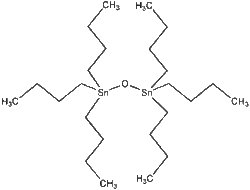Difference between revisions of "TBT"
From Coastal Wiki
| Line 20: | Line 20: | ||
[[Antifouling paints]] containing TBT (tributyltin oxide and tributyltin fluoride) are much more effective and long lasting than mercury or copper based antifouling paints. They were first painted on ships in the 1970s and were subsequently also commonly used net enclosures of mariculture installations.<ref name = pol>Clark, R,B., 1999. Marine pollution. Oxford University press, Fourth edition, pp 161</ref> | [[Antifouling paints]] containing TBT (tributyltin oxide and tributyltin fluoride) are much more effective and long lasting than mercury or copper based antifouling paints. They were first painted on ships in the 1970s and were subsequently also commonly used net enclosures of mariculture installations.<ref name = pol>Clark, R,B., 1999. Marine pollution. Oxford University press, Fourth edition, pp 161</ref> | ||
| + | TBT concentrations ranged from 1 ng/l in boot free areas to levels above 600 ng/l near marinas. | ||
Revision as of 11:54, 27 July 2009
Definition of tributyltin:
Tributyltin (TBT). Antifouling paint for ships hulls which is toxic to marine life and prohibited by some nations for use on small craft.
[1]
This is the common definition for tributyltin, other definitions can be discussed in the article
|
Notes
| Tributyltin oxide |
|---|

|
| Formula |
| C24H54OSn2 |
Antifouling paints containing TBT (tributyltin oxide and tributyltin fluoride) are much more effective and long lasting than mercury or copper based antifouling paints. They were first painted on ships in the 1970s and were subsequently also commonly used net enclosures of mariculture installations.[2]
TBT concentrations ranged from 1 ng/l in boot free areas to levels above 600 ng/l near marinas.